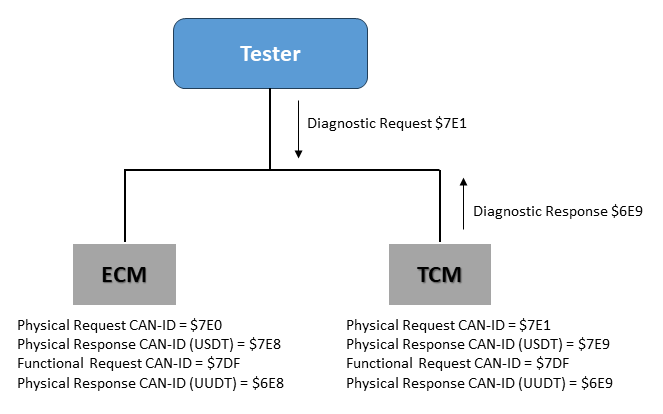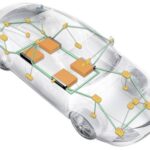In the CAN protocol, USDT and UUDT diagnostic responses define a method for transmitting diagnostic data by dividing large amounts of information into smaller segments or frames.
Understanding the difference between these two methods is crucial for ensuring efficient communication in automotive diagnostic systems. In this article we will explain both of these diagnostic responses.
Table of Contents
What are USDT and UUDT diagnostic responses?
The tester sends every diagnostic request (Diag_req) to the vehicle ECU. Now, the ECU responds with a diagnostic response (Diag_resp). Engineers use USDT and UUDT diagnostic responses to reply to CAN diagnostic requests. These approaches are explained in detail below:
USDT Diagnostic Response
When a diagnostic CAN message response exceeds a single CAN frame (more than 8 bytes of data), the system splits the CAN frame into two or more parts. Such diagnostic responses are called Unacknowledged Segmented Data Transfer (USDT) responses. In this way, the method segments data for CAN diagnostic communication, which the system identifies as USDT. Additionally, the OSI model’s Transport and Network layers provide this process, and it serves as the default method.
NOTE: There is no data segmentation for Onboard communication in CAN bus.
USDT does not automatically indicate that a message exceeds a single CAN frame. Protocol include a PCI (Protocol Control Information) byte with USDT. The PCI byte is the first byte of the CAN data field and controls the data segmentation in CAN.
UUDT Diagnostic Response
To optimize data transfer with CAN frames, the PCI byte can be removed from the Diagnostic response, which saves an additional byte of data. This type of data transfer is called Unacknowledged Unsegmented Data Transfer (UUDT).
When using the UDS diagnostic protocol, vehicle manufacturers (OEMs) and suppliers must first agree on additional physical response CAN-IDs for UUDT. These IDs, also known as UUDT response CAN-identifiers, ensure proper communication between the systems.
Examples of USDT and UUDT diagnostic responses
In the example below, the tester sends a physical address CAN-ID request to the TCM (Transmission Control Module). TCM then responds with a UUDT response.

USDT CAN-IDs for ECM and TCM would be $7E8 and $7E9 respectively. Similarly, UUDT CAN-IDs for ECM and TCM would be $6E8 and $6E9 respectively.
Note: The priority of CAN-ID $6E9 (UUDT) is higher than that of $7E9 (USDT).
Functional request with USDT Response
The system transmits a maximum of 7 bytes of data because the PCI byte occupies 1 byte.

Physical request with USDT Response
The bus load increases because the system must send four diagnostic messages: $7E0 → $7E8 and $7E1 → $7E9.

Physical request with UUDT Response
The system transmits a maximum of 8 bytes because it can omit the PCI byte in a UUDT response.

Final Thoughts on USDT and UUDT diagnostic responses
The choice between USDT and UUDT approaches would depend on factors such as the size of the diagnostic data payload, the available bandwidth on the CAN bus, and the specific requirements of the diagnostic application. Both methods aim to efficiently transmit diagnostic information over the CAN network while considering speed, reliability and resource utilization.
Engineers typically prefer USDT when they need to transmit larger amounts of data reliably in a controlled sequence, while they use UUDT for small, time-sensitive messages that require low overhead. Selecting the right approach ensures the vehicle’s diagnostic system performs optimally without overloading the communication network.







